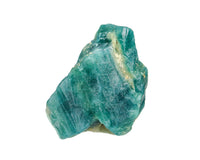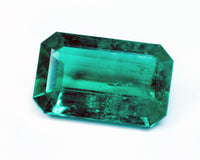- 1. Turquoise
- 2. History of Turquoise
- 3. Physicochemical Properties of Turquoise
- 4. Types of Turquoise
- 5. Turquoise Treatment and Artificial Types
- 6. Magical and Healing Properties of Turquoise
- 7. Turquoise for Sale Courtesy of KenKenGems
Turquoise
Turquoise has been around for millennia. The stone takes pride of place in the cultures of ancient Egypt, Persia, China, Tibet, Russia, and America. Archeologists believe that the oldest turquoise jewelry was made around 6000 BC. For our ancestors, the stone was not only beautiful but also powerful, it embellished their amulets, talismans, and ritual attributes. Legends and myths connect turquoise with gods, prophets, and outstanding individuals. Today, turquoise is a sought-after material for jewelry and decorative items.
Turquoise owes its name to the French ‘pierre turquoise’, which means the Turkish stone. The Great Silk Road carried gems mined in the east to Europe, and the route lied through Turkey. In its historical homeland, Persia, turquoise is called ‘fayrzah’, which means victorious, bringing happiness.
History of Turquoise
Egyptians discovered turquoise in the second millennium BC. The mineral was found deep in mountains, in places almost inaccessible to people. The ancients didn’t think that the stone grew out of the ground. Instead, they believed that it had come from above. For this reason, it carried a sacred meaning. Egyptians used it to carve scarabs, figurines, and talismans.
Turquoise was of the highest value to the Native Americans of pre-Columbian America. Apparently, it was the sacred stone of the Aztecs. Turquoise can be seen on Aztec ritual masks (human skulls inlaid with turquoise), portraits of gods, in the burials of chiefs and noble tribesmen, etc.
The Arabs treated the mineral with respect considering it a talisman of good luck. The story of the Prophet Muhammad was engraved on a large piece of turquoise. In Tibet, the stone was endowed with tremendous mystical and sacred powers and the people of India relied on it to treat various diseases.

Physicochemical Properties of Turquoise
According to ancient legends, turquoise is the bones of people who have died because of unrequited love. Mineralogy, however, defines turquoise as a combination of aqueous phosphates and aluminum. The stone has a sedimentary origin. Turquoise occurs in the form of small aggregates or oblong crystals, although the latter is quite rare. The hardness of the stone is 6 on the Mohs scale, which makes it suitable for jewelry-making. The stone is opaque but some of its parts may be translucent.
In addition to phosphates and aluminum, turquoise contains copper, silicon, zinc, calcium, and other inclusions. The gem’s color depends on the quantity and nature of these components.
• blue colors of a wide spectrum are the result of copper admixture;
• strontium adds violet hues;
• green hues are an effect of iron.
• a vibrant herbal-green color is found in turquoise rich in vanadium oxide;
•iron hydroxide is responsible for yellow and brown tones;
• kaolinite and quartz make turquoise gray and almost white.
It is common to believe that age directly affects the color of the stone. Pale, almost white colors are a sign of young turquoise. The most valuable sky-blue colors occur in ‘ripe’ gems. Old jewels take on greenish hues as a result of copper being replaced by iron oxides.

https://store.kenkengems.com/collections/turquoise
Types of Turquoise
The oldest turquoise deposits are located on the Sinai Peninsula in Egypt, as well as in Iran and Central Asia. Some of the fields have already been depleted but many ancient mines work till this day. Currently, the majority of natural turquoise comes from the southwest of the United States, Iran, Mexico, China, Egypt, and Australia.
Each field offers a unique appearance. Perhaps the most valuable specimens are found in the mines of the Sleeping Beauty Mountain, Arizona. Named after the mountain, this type of turquoise has a uniform sky blue color. Arizona provides many other types of the beautiful stone. Turquoise Mountain turquoise is known for its brown or black matrix filled with dots, which color range from light blue to almost green. Sonoran Gold Turquoise mines located nearby the Mexican border provide gems with a green background and splashes of blue and gold. Kingman turquoise sets standards for all turquoise found in North America. It is prized for its intricate matrix. Originally, it is of white color but it is typically dyed black for more expressiveness. Overall, there are more than 30 types of natural turquoise.
Turquoise Treatment and Artificial Types
Along with natural turquoise, you may come across stones that have been enhanced or created artificially.
Pressed (or block) turquoise is obtained from low-quality or tiny pieces, leftovers, and crumbles of stones that have been cut. These materials are ground and mixed with polymer resin and, if necessary, dye. The resulting compound is shaped into beads or cabochons and baked. The whole process is called reconstitution. You should be very careful when buying block turquoise since poor-quality specimens contain little to no natural gems.
Because of the porous texture and relatively low hardness, semi-precious turquoise should be worn and maintained with a great deal of care. To improve its hardness and wear resistance, the stone is impregnated with special reinforcing agents. This process is called stabilization, and such turquoise is termed stabilized, reinforced, or bonded. One of the oldest ways to stabilize the gem is to immerse it in wax, oil, or paraffin. Modern treatment techniques rely on polystyrene, water glass, or epoxy resin. These materials fill the voids in the stone thus improving its durability and appearance (the so-called wetting effect).
Sometimes, stabilization is combined with dying. Color-shot stones may obtain a completely different color, although in most cases, this method is utilized to uniform pigmentation or enhance the color of veins.
Backing is a solution to enhance thinly-cut turquoise. Because turquoise has a varied hardness due to inclusions, it may crack when a stone is finely cut en cabochon or in a slab. To increase its durability, a turquoise stone is backed, i.e. it is glued to a stronger material.

Magical and Healing Properties of Turquoise
Turquoise is a stone of happiness and good luck. In antiquity, mothers would craft turquoise charms to protect their children from evil spirits, diseases, and nightmares. Overall, the stone patronizes women because its energy is akin to that of females. It serves ladies well to bring warmth and comfort to their homes, enhance wisdom and intuition, and ensure prosperity. If you’re looking for wealth, it makes sense to set turquoise stones in gold. On the other hand, love-seekers will benefit from turquoise in silver settings.
Turquoise is an excellent healer. It has a positive effect on mental health. The gem relieves insomnia, promotes relaxation, and tames headaches. Turquoise worn around the neck helps treat thyroid diseases. Folk healers ‘prescribe’ turquoise to improve vision.

Turquoise for Sale Courtesy of KenKenGems
Here, at KenKenGems, we source the best turquoise specimens mined across the globe, from Iran (Persian turquoise) to Arizona (including the sough-after Sleeping Beauty and Kingman turquoise). We focus on natural turquoise the way the Mother Nature designed it. Proudly showcasing their veins and bizarre patterns, these stones are stronger and more beautiful than any artificially-enhanced counterparts. Go ahead and browse through our extensive selection of one-of-a-kind turquoise stones as well as jewelry supply including loose stones, sets, and strands.




